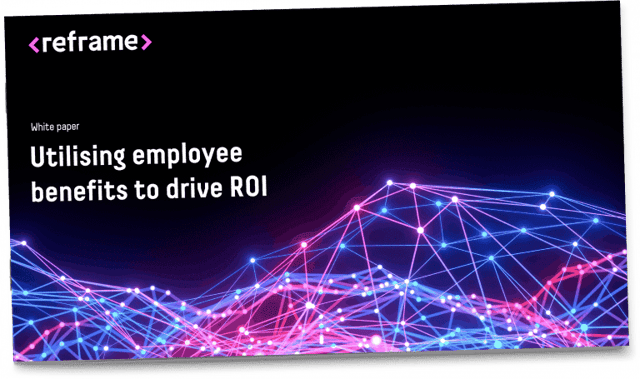Most organisations know the significance of an employee benefits package, however not all of them know the efficiency or effectiveness of their programmes. Less than half of the HR decision makers that we surveyed admitted to measuring return on investment (ROI). Our previous blog on the challenges of measuring ROI from employee benefits explored why this is the case.
How to measure ROI on your employee benefits package
While there is a variety of metrics for measuring ROI, you must be clear about what you want to achieve from your employee benefits package and identify a metric of value. For example, 59% of organisations, class employee engagement has the most important objective of their benefits strategy.
Monitoring the frequency of engagement among benefits is a good indication. Employees signing up for benefits is only half the picture. Whether they are getting the most out of them is key to understanding the full picture.
Benefit take-up can be influenced by the type of benefit and the demographic of your workforce. For instance, some health-related benefits may not be utilised immediately but will still deliver value if employees access and engage with them as and when they need.
Employee satisfaction and surveys are popular methods of choice. While these are important for understanding employee engagement and satisfaction, they are not measures of ROI. Using a combination of measures, such as sickness and absence rates versus take-up of health and wellbeing benefits, will help you to determine real ROI. The key is identifying what engagement or success looks like in your organisation.
Employee benefit providers can help you assess the level of engagement. Valuable metrics such as: the number of interactions, employee savings or the number of goals or plans completed can help you demonstrate a return on your benefits spend. You could also review engagement with communications and identify which sources are most effective at driving take-up and utilisation.
Using ROI to inform your employee benefits
Technology is not the sole solution but can certainly help to centralise, automate and analyse data. It can help you make informed decisions about which benefits are most valued and effective and secure budget. In addition to demonstrating a clear link between benefit utilisation and quantifiable health outcomes.
Adding additional benefits or sending an ad-hoc communication is unlikely to get to the root of the problem. Capturing the right information will enable you to explore why your employee benefits package is underperforming. It could indicate areas for improvement, for example is it because employees are unaware of their benefits, perhaps they don’t find them relevant or forget how to access them.
By aligning your objectives and with the needs of your workforce, you should achieve greater employee engagement and cost efficiency.
The hidden ROI in employee benefits
Employee benefits should not operate in silo. They have a direct impact on employee wellbeing, business performance and payroll costs. Benefits can contribute to objectives in other areas of the business or used to add value, for example: diversity and inclusion, occupational health, recruitment, and marketing.
ROI should not be a static measure. Just as the objectives and needs of your business change so too should the measures around ROI. Tailoring these measurements to those most valued by your board is key, whether it be increasing profits, making savings, or improving productivity for example.
Measuring ROI will help you to be more confident about forming a clear strategy and adapting your employee benefits package to meet the needs of the business, as well as your employees.
.jpg?width=300&name=image%20(30).jpg)
